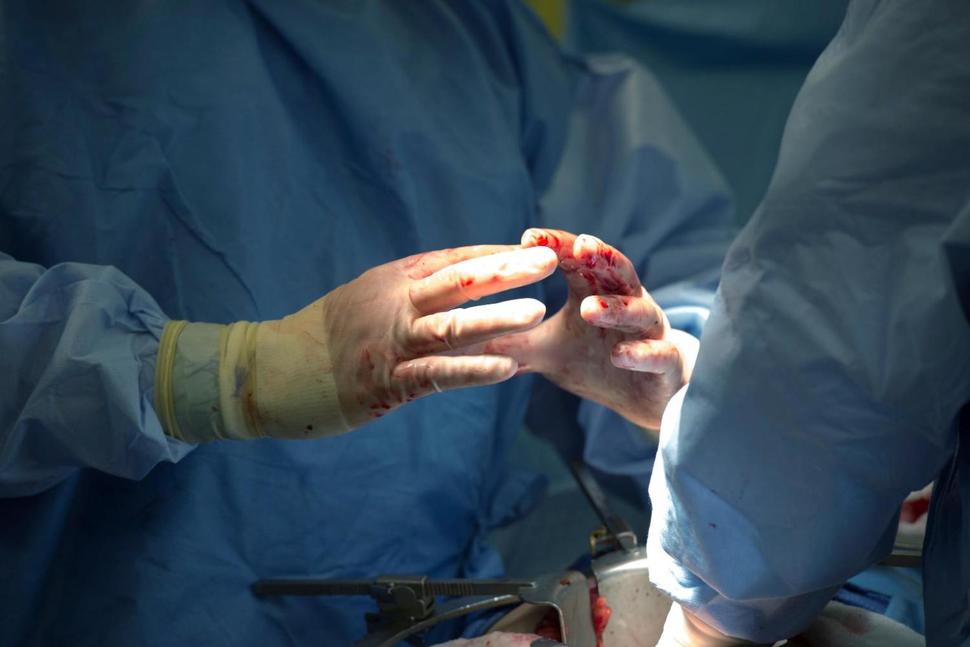Half the dollars spent on health care in America have something to do with a surgical procedure — including post-surgery care to fix problems that could have been prevented.
So any chance to make surgery safer, and avoid complications, could have a major impact on both the nation’s health and bottom line.
In a new paper in JAMA Surgery, a team from the University of Michigan lays out the case for a model that could do just that: the one that surgeons and nurses in 72 hospitals across Michigan have quietly built over the last decade.
Fueled by funding from the state’s largest insurer, Blue Cross Blue Shield of Michigan, and driven by a pool of detailed data on tens of thousands of operations of all kinds, it’s called the Value Partnership model.
Four other states have borrowed it to build their own models, with insurer money and a physician-driven approach.
But for the model to spread further and faster, the authors of the new article call for the federal government to get involved. A partnership between the Centers for Medicare and Medicaid Services and private insurers could give the VP approach a needed boost and help providers in more regions and states make care better and more cost-effective.

(Image credit: Associated Press)
Darrell A. Campbell, Jr., MD, the U-M surgeon and emeritus professor who co-authored the new piece and has helped lead the Michigan effort, says the VP approach could provide the kind of evidence-based, public-private innovation model that CMS has said it’s looking for.
Although the Michigan VP effort aims to improve the care of all surgical patients, no matter where their health insurance is from, Campbell notes that 30 percent of the operations and 20 percent of the Michigan patients are covered by Medicare.
“This effort, designed by the people on the front lines of surgical care, has succeeded because it’s collaborative, non-punitive, data-driven and supported by a payor that has supported the vision of using shared data to improve care in ways that make sense to the care team,” says Campbell.
“We believe it could be a model for the nation, but it will take partnership on a federal level to incentivize more payors and providers to start new efforts in their areas.”
For instance, he and and co-author Greta Krapohl, RN, PhD, say CMS could pay physicians more under the MACRA payment model if they take part in a VP-like effort in their area. And, it could offer tax credits or other incentives to private insurers if they fund a VP effort in their state.
Campbell, Krapohl and their co-author, U-M surgeon Michael Englesbe, M.D., cite a wide range of results achieved in Michigan so far and published in the medical literature. All come from the various Collaborative Quality Initiatives that have sprung up under the VP model, including the Michigan Surgical Quality Collaborative led by the three authors of the new article.
These results include:
- A 20 percent reduction in general surgery complications in just five years, reducing costs by $20 million – a far larger decline than in a comparison states;
- A substantial drop in short-term death rates among Michigan residents undergoing bariatric surgery; a faster drop than other states
- Major reductions in surgery-related infections after colon surgery, after the VP effort identified and shared six specific strategies to reduce risk. In addition, new data currently in preparation for publication show progress against surgical site infections in a broader range of operations
- The use of the VP networks of doctors, nurses and hospitals as a platform for discovering new opportunities to improve care – such as a surgical opioid prescribing reduction effort that just published its first recommendations.
They describe how the VP approach, which started with general surgeons in 2005, has spread to a range of procedure-based disciplines such as obstetrics, bariatrics, orthopedics, breast surgery, and interventional cardiology.
Each has its own CQI to collect, pool and share data on procedures in that specialty. Even non-surgical disciplines have adopted the approach, including emergency medicine and hospital-based general medicine.
At the root of the approach is a network of participating hospitals that gather and analyze of a wide range of data from every operation, benchmark surgical outcomes with other similar hospitals in the region.
Coaching the lower-performing outliers can improve care, and analysis of high-performers can identify best practices that can be shared with others, or even be rolled out as part of “bundles” of tactics that all should use.
Recently, the Michigan VP team welcomed people from 12 other states to a conference to learn more about the VP approach, and launched a new nationally focused initiative with funding from the U-M Medical School’s Department of Learning Health Sciences. Called the Center of Excellence for Collaborative Quality Improvement, to help spread the concept and serve as a nexus for information and tools to help others adopt the approach
“We need to think of ways to encourage the spread of this model, and to integrate it into the quality and value focus that is emerging in healthcare,” says Campbell. “This also means increasing awareness of what the Michigan model has achieved, by harnessing the best ideas of those who provide care, building trust among participants, and spreading the approaches that yield the best results.”




